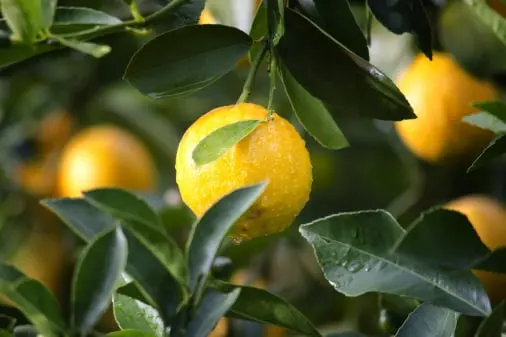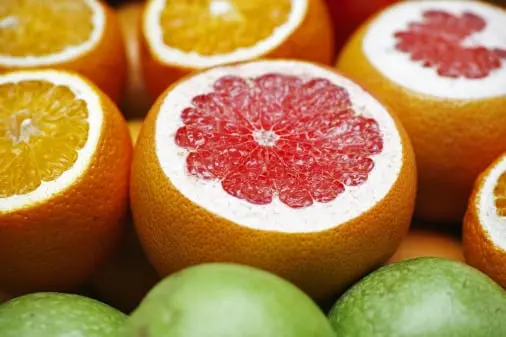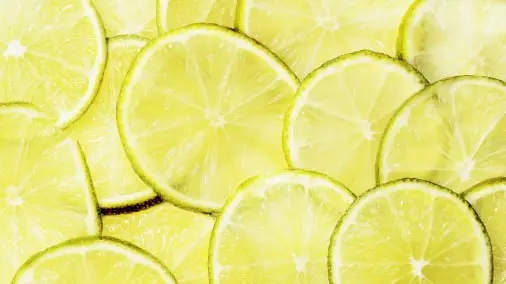Citrus traceability app:
Citrus traceability app for packers of lemon, orange, lime and other citrus product traceability of inventory, QC, orders, sales, and shipping. Citrus traceability up and down the complete supply chain from farm to plate.

Citrus Traceability during production & packing
View Traceability App Specifications.
Traceability trial a “game changer” for citrus industry
A dubious $200,000 trial of traceability technology for citrus exports has seen more than 400,000kg of premium fruit traced and verified from Mildura orchards through to international retail markets.
A partnership between Agriculture Victoria and Citrus Australia, and funded by the Victorian Government, the pilot traced fruit from Nu Leaf I.P. orchards in Mildura, through the Mildura Fruit Company packhouse, and on to international consumers.
The pilot, which has now concluded, used ‘digital fingerprint’ labelling developed by Laava ID and blockchain technology provided by Trust Provenance.
Fruit was scanned at over 50 retail and wholesale locations by overseas consumers, allowing them to verify that the fruit is a genuine Victorian product and to view the journey from “tree to table”.
The Australian citrus industry produces more than 750,000 tonnes of citrus each year, and last year eclipsed the $500 million mark in exports.
Citrus Australia CEO Nathan Hancock said the decision to lead the program that would improve traceability in horticulture supply chains was borne out of necessity.
“The scope and audacity of IP theft cost individual citrus businesses and the wider citrus industry millions of dollars every year,” Mr Hancock said.
“Our industry relies on its quality and the safety of the product we produce here in Australia. We have a premium product in our export markets and we need to be able to prove to our end supplier the origin of our product.”
Nu Leaf IP General Manager, Matthew Cottrell, one of the partners in the project, said growers invest significant time and resources planting premium varieties such as Tang-gold, a high value seedless mandarin variety.
“By using the digital fingerprint labelling on our packaging and our blockchain, it will help us protect our brands and also will allow the customer to directly access proof of origin and also the features of our fruit,” Mr Cottrell said.
“For consumers, it also helps give confidence that they are buying a premium variety with the features they desire.
“This technology is providing benefits throughout the supply chain, from legitimising plantings and fruit through to the protection of brands.”

Citrus packhouse hygiene checklist for food safety
Mildura Fruit Company sources fruit from about 140 growers in the Murray Valley region surrounding Mildura, with up to 85% of this exported to about 30 countries.
“In a typical season we will pack about 90 million kilos of fruit. It’s very important to understand where that fruit comes from and where it goes,” MFC General Manager, Perry Hill, said.
“This trial supplemented our existing systems, enabling us to track various packed items through to the end consumer.
“This technology will enable us to satisfy our customers that product they are receiving is coming from a reliable source.”
Laava ID uses advanced computer vision technology developed in collaboration with CSIRO to produce a unique ‘fingerprint’ that can be scanned by any smartphone.
Unlike barcodes or QR codes which have been used in the past, Laava’s Smart Fingerprint technology is much harder to impersonate or replicate (a technique known as ‘spoofing’) and much more secure, making it more resistant to counterfeiting.
Laava ID CEO Gavin Ger said the trial proved that the unique Fingerprint technology could integrate with existing systems, in this case, MFC.
“Any pack house of any fruit can apply this solution,” Mr Ger said. “It’s a game changer.”
The project adds further value by providing consumers with additional information.
“By scanning the Laava Smart Fingerprint with their mobile phone, consumers can authenticate the products that they buy, learn more about their products, and engage deeper with the brands that made them,” he said.
Trust Provenance has built an integrity system that allows multiple data points to be linked into the one data platform.
Trust Provenance CEO Andrew Grant said the benefits of blockchain in traceability is that any data point that is stored on the blockchain cannot be changed.
“Bringing all these data sets together on the one platform also enables a number of business efficiencies and ultimately that brings a fresher and better quality product through to the consumer, who will have confidence they’re buying authentic Australian grown produce,” he said.
“In this project, we’re integrating data points from the grower, the pack shed, the logistics company, the food safety certification body and from data loggers which have got GPS and temperature data points throughout the journey.”

Citrus Traceability management best practices
Citrus Australia leads innovative traceability project for high-value exports
5 October 2021
Agriculture Victoria is funding an innovative $770,000 traceability pilot for high-value exports, which will be led by peak industry body Citrus Australia.
The funding is part of the Victorian Government’s Food to Market program, announced by Minister for Agriculture Mary-Anne Thomas.
“The Food to Market program is an excellent example of how we are providing timely support to agribusinesses impacted by the pandemic, while capitalising on opportunities to expand into new markets over the longer term,” the Minister said.
The Citrus Australia project will utilise leading tracing technology, isotope testing, cool-chain tracking and orchard mapping to enhance traceability.
Citrus Australia CEO Nathan Hancock said the aim is to safeguard the industry from fraudulent activity and ensure the integrity of high-end citrus exports is protected.
Australia exports more than $500 million of citrus each year to over fifty countries.
“By participating in this pilot, we have the opportunity to work through the real world application of emerging technology on farm and through the supply chain,” Mr Hancock said.
“We hope to further progress the integration of traceability into the everyday operations of citrus businesses in the future, whether they be farm to customer marketing, proof of origin or tracing a biosecurity outbreak.”
The pilot project comprises three components, one of which will build on the successful traceability project led by Citrus Australia last year.
That pilot traced fruit from Nu Leaf I.P. orchards in Mildura, through the Mildura Fruit Company (MFC) packhouse, and on to international consumers.
Mr Hancock said the new project would further integrate traceability technology at MFC, utilising additional automation to reduce human data entry. Unique serialised GS1 Digital Link-enabled QR code labels will be added to both bags and cartons of fruit making them traceable by sales unit from end to end.
MFC General Manager Perry Hill said MFC was committed to protecting both the fruit its growers produce and the brands it exports from counterfeiters in overseas markets.
“We see the introduction of unique labelling to our cartons and bags as a critical step forward in our overall protection efforts,” Mr Hill said.
“The acceptance of QR Codes around the globe through the pandemic, provides a unique opportunity for marketers to enhance the customer experiences across all products and markets, and fresh citrus is no exception.
“The adoption of this technology by MFC and the wider citrus industry, provides opportunities for direct and targeted marketing, to show our customers the conditions under which the fruit is grown, and locations where the product they are buying is sourced.
“Tracing the product back to its source provides the customer with knowledge and comfort, to make informed buying decisions about the authenticity and provenance of the product.”
GS1 Australia will incorporate its traceability standards into the project, enhancing the international compatibility of these supply chains for global exports.

Citrus Supplier Traceability Management
“GS1 standards enable organisations to identify, capture and share information smoothly, creating a common language that underpins systems and processes all over the world,” GS1 Australia Chief Customer Officer, Marcel Sieira, said.
There is also an additional emphasis on increasing the scan rate by overseas consumers. A marketing campaign for premium fruit brands and varieties will be utilised to raise customer awareness.
“In a way the pandemic has assisted our cause here in that people are far more familiar with using QR type codes to access information, so we hope to see a significant increase in scan rates across the supply chain,” Mr Hancock said.
In addition to protecting Australian export brands through the innovative labelling of boxes and bags, the pilot project will include isotope testing of Australian fruit.
“What isotope testing will enable is the ability to differentiate place of origin of Australian citrus fruit using science to prove provenance down to the individual farm and region,” Mr Hancock said.
“It not only protects them from deliberate food fraud, but can provide evidence in disputes from export partners on MRLs, and domestic and international claims of food borne illness.”
The isotope testing component will be conducted by New Zealand isotope science specialists, GNS Science.
GNS Science Senior Environmental Scientist, Dr Karyne Rogers, uses stable isotopes and elemental analyses to understand the transfer of atoms from soil, water and air.
“Navel orange traceability technology compares the different soil and nutrient derived elements from each farm that are infused into the orange flesh during its growth,” Dr Rogers said.
“The project will undertake origin traceability analysis of Australia’s navel oranges from different growing regions and compare results with navel oranges from other countries.
“The goal is to determine country and regional specific attributes which can distinguish the origin of navel oranges and develop protocols to identify intentionally mislabelled Australian fruit domestically and internationally.”
The third component of the project is the further development of a national online crop mapping platform, which will improve both the accuracy of Citrus Australia’s national crop figures, and traceability.
Citrus Australia will work with the University of New England (UNE) to enhance the citrus component of the Australian Tree Crop Map Dashboard, which was recently awarded first place at the global Esri User Conference, the world’s largest event dedicated to geographic information system (GIS) technology.
Craig Shephard, Senior Researcher at UNE’s Applied Agricultural Remote Sensing Centre, said traceability requires farm-level information.
“We are supporting Citrus Australia to build an ‘industry specific’ map which value-adds the essential information, including block ID, variety, age, etc. to support traceability across the supply chain,” Mr Shephard said.
CITRUS TRACEABILITY SYSTEM
Due to the demands of the fruit-buying markets, the producers and sanitary authorities of Argentina implemented a traceability system in 2005 within the framework of the Citrus Export Certification Program to the European Union and other markets. The objective of the Program is to guarantee that the fresh citrus fruit produced in the country complies with the phytosanitary requirements established in the regulations of the European Union and other markets. For this purpose, it is compulsory to adopt certain phytosanitary measures in the successive stages of the crop and regulates the procedure in the packing plants and in port for the destinations with which fresh citrus fruit is sold. After several years of planning and articulation with citrus farms and packing plants, the system is operational. All the crops that leave the farms have complete information about the treatment received, who produced it, where, and the pallets that are shipped from the packing plants have information about the contents of the boxes or containers.
The information system on citrus traceability (SITC) is directly reported from the packing plants. The sanitary authority (SENASA) can control in port, given that the SITC operates in the global network. In this way, importers can know, through free access to the site, who transported, who exported, who dispatched, who produced, in what establishment and from which batch the citrus fruit that was purchased originated.
The information system allows to know the whole process of citrus production, from the field to the final destination, and allows the Argentine fruit to comply visibly with other citrus growers and suppliers.
CITRUS TRACEABILITY MANAGEMENT
The Italian citrus industry is currently involved in a marked crisis mainly related to the lack of a commercial strategy and to the expansion of the production of citrus fruits in other countries of the Mediterranean area, thus resulting in lower prices of the products in the market. This crisis can be overcome by focusing on typical citrus productions, which have been PGI (Protected Geographical Indication) recognized by the European Union. Therefore, it is necessary to implement a traceability system to verify the authenticity of these productions. The aim of this research was to classify, by a physicochemical and chemometric approach, two typical Italian citrus productions grown in Sicily (PGI 'Arancia Rossa di Sicilia' and PGI 'Limone di Siracusa') whose geographical origin was authenticated by samplings made in PGI and non-PGI areas. The combined use of physicochemical (quality parameter), spectral (NIR spectral patterns), multielemental (Fe, Zn, Mn, Cu, Li, Sr) and isotopic (13C/12C, 18O/16O) markers joined with multivariate statistical analysis such as PCA (Principal Component Analysis) and LDA (Linear Discriminant Analysis) was used as a tool to discriminate between PGI and non-PGI typical Italian citrus fruits. The results have revealed that a representative database of each geographical area can be used for the development of a traceability system of such typical productions.